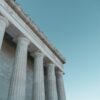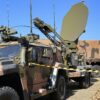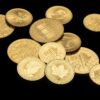The Federal Reserve will publish results from their annual stress tests of major US financial institutions today after the close. Based on those, banks will be able to officially announce their plans for future share buybacks and dividends next Monday, which are expected to total about $80 billion. No big surprises are expected and all banks should be well-capitalized in the result of a hypothetical economic downturn.
Those simulations may begin to feel a little more real this year, however, as recession fears are on the rise and banks appear to expect an ongoing downturn in revenues related to investment banking, mortgage lending, and other lines of business to continue. Yield curve inversions and job cuts have slammed bank shares this year and Q2 earnings are now just three weeks away.
Related ETFs: SPDR S&P Bank ETF (KBE), Financial Select Sector SPDR Fund (XLF)
Thursday is expected to be a very significant day for US banks and their plans for the rest of the year as the Federal Reserve will post the results of annual stress tests after the close. Per Reuters, these tests assess how much capital banks would need to withstand a severe economic downturn and are integral to banks’ capital planning. Specifically, how each bank’s capital ratios and aggregate losses hold up under a hypothetical economic downturn, determining the size of its “stress capital buffer”, plays a major role in how much cash they can return to shareholders in the form of dividends and share buybacks.
As a result, banks cannot announce their plans to return capital to shareholders until after the results of the test are announced. We will get the test results this afternoon, after the close, and banks will then be free to announce their repurchase and dividend measures on Monday, June 27.
Bloomberg, citing estimates from Barclays PLC, reports bank shareholders’ haul will likely total a combined $80 billion, led by JPMorgan Chase & Co.’s expected $18.9 billion spend. Bank of America Corp. and Wells Fargo & Co. could return as much as $15.5 billion and $15.3 billion, respectively. JPMorgan would lead the pack in planned dividends at more than $12.9 billion, while Wells Fargo may have the most expensive plans for share repurchases at $10.0 billion.
Despite Reuters noting that this year’s test will be significantly more strenuous than 2021’s, with a “severely adverse” scenario simulating a 5.75 percentage point jump in unemployment, as opposed to just 4.0 percentage points last year, Barclays analysts have said they expect all banks should “pass” the stress test with bank buffers slightly higher than last year. Further, they project every bank involved will “hike its dividend this year and next”.
If all goes according to plan, stress test results will be a desperately needed injection of optimism for the US financial sector, whose shares have been sagging since the start of the year. Both the SPDR S&P Bank ETF (KBE) and Financial Select Sector SPDR Fund (XLF) stand as testament to weaker prospects in the banking industry this year as shares of both funds are down more than -21% YTD. Despite the Federal Reserve hiking interest rates, effectively pushing up the rates banks can charge for lending activity along…
To read the complete Intelligence Briefing, current All-Access clients, SIGN IN All-Access clients receive the full-spectrum of MRP’s research, including daily investment insights and unlimited use of our online research archive. For a free trial of MRP’s All-Access membership, or to save 50% on your first year by signing up now, CLICK HERE










